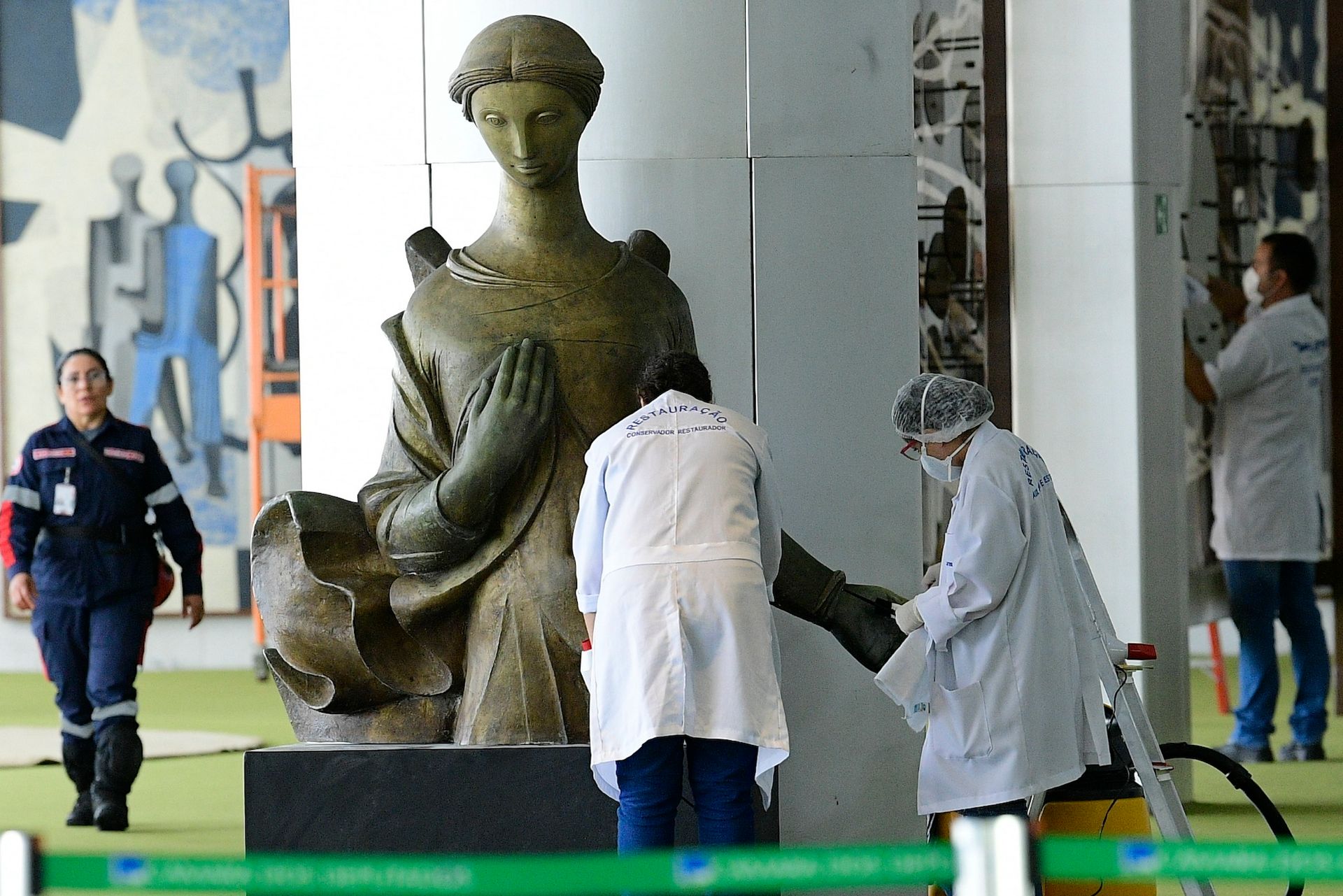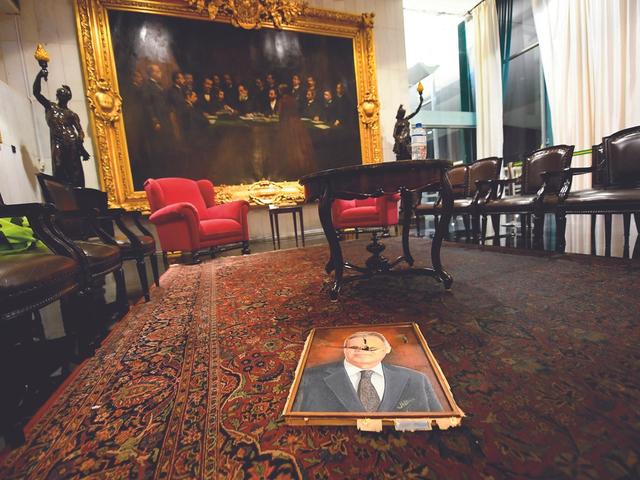An initiative to create a comprehensive record of the 2023 insurrection of the Brazilian congress has been launched as part of the development of the Museum of Democracy in Brasília, a forthcoming museum that will explore the complex history of democratic rule in the country.
The Brazilian Institute of Museums (Ibram) announced the project this month, revealing that the digital archive will comprise a collection of videos, audio recordings and photographs documenting the events that unfolded on 8 January of last year, when thousands of supporters of the former president Jair Bolsonaro arrived in the Brazilian capital to protest the election of President Luiz Inácio Lula da Silva (known as Lula) .
The initiative aims to offer an unbiased presentation of the event, featuring “original and scenographic content” and objective language “with substantive approaches, and without adjectives”, according to a statement published by organisers. Some materials included in the forthcoming archive—like news clippings, previews of in-progress documentaries and other items related to the insurrection—are on view in the museum’s first online exhibition.
Part of the online archive will be exhibited in the forthcoming museum, an $8m project scheduled to open in 2025. Beyond the insurrection, the museum will consider the events that influenced the political evolution of the Western world, beginning with the origins of democratic thought in ancient Greece, and examine the national and international events before, during and in the aftermath of the 1964-85 military dictatorship in Brazil.

A team of technicians begins the restoration work on Angel (1970) by Alfredo Ceschiatti Pedro França/Agência Senado
The museum will be financed through a mix of federal and private funds, holding rotating exhibitions and civic programmes like educational seminars and courses. Its mission is to trace the establishment of the Brazilian constitution in 1888, and “contribute to the political evolution of the Brazilian people in aspects that are still lacking in their formation—such as the expansion of democratic culture and the increase in political participation”, organisers state.
During the insurrection, thousands of people broke through security barriers and vandalised three Oscar Niemeyer-designed federal buildings—including the Palácio do Planalto—listed as Unesco World Heritage Sites. The protestors hoped that the invasion would spur a coup d'état and disrupt the democratic transition of power. Police officers, some of whom were attacked amid the chaos, have been accused of permitting the ensuing riots by not intervening fast enough. Of the 1,500 people who were detained, around 400 have been arrested in connection to the events of that day.
The buildings targeted contained several works of art that were damaged or stolen during the invasion. Among those targeted was Emiliano Di Cavalcanti’s As Mulatas (1962), which was found ripped in seven places; Jorge Eduardo’s Bandeira do Brasil (1995), a painting of the national flag that was discovered in a pool of water after insurrectionists flooded the floor; and the sculpture Angel (1970) by Alfredo Ceschiatti.
These works and several others damaged during the insurrection are now being restored, including a total of 15 paintings, a Portuguese ceramic amphora, a work in wood, two metal sculptures and one work on paper. More than $445,000 has been budgeted for the year-long restoration project, overseen by the National Historic and Artistic Heritage Institute (Iphan) and the Federal University of Pelotas.
The restorations will be carried out inside the Palácio da Alvorada (the presidential residence) according to the wishes of the Lula administration, and will be open for public viewing. In an announcement last year, Iphan stated that the intention of having public facilities is to both “encourage the return of visitation to the palaces” and to allow “the population to visualise how heritage is recovered, especially that which gained greater symbolic meaning after 8 January”.



